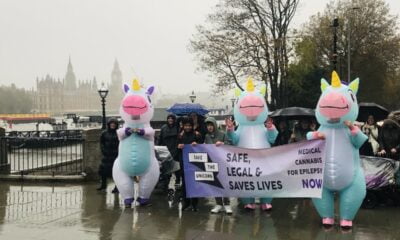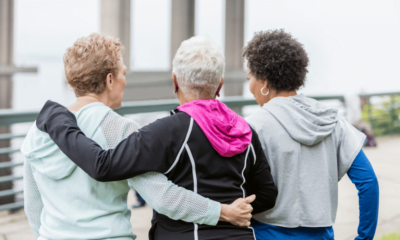The short- and long-term effects of prenatal cannabis use on both parent and child are still poorly understood. New research from North America sheds light on this sensitive topic.
Some people consume cannabis during pregnancy to alleviate symptoms such as nausea, stress, insomnia, and pain (to name a few). Cannabis is also used to treat pregnant people who have pre-existing conditions including MS and epilepsy. But a growing body of research, albeit still very limited in scope, suggests that cannabis use during pregnancy and breastfeeding could lead to lower birth weights, higher preterm birth rates, and other physical and neurological outcomes for both pregnant person and child.
We explore the reasons why women may choose to consume cannabis medicinally during pregnancy in more detail here
As legal cannabis becomes more mainstream for medicinal and recreational purposes, it’s important to further examine the complex relationship between cannabis use and pregnancy.
More than half of people in the UK and Europe now support legalising adult use cannabis—with Germany recently announcing intentions to legalise within the next couple of years—and a green wave of cannabis legalisation continues to roll across the United States. The collective value of the CBD, medical cannabis, and adult-use cannabis markets is expected to almost double globally from US$45 billion in 2022 to more than US$101 billion by 2026.
Three new studies, two based in the US and one in Canada, add to the evolving body of research on cannabis use during pregnancy. One study looks at connections between cannabis use and birth outcomes amongst pregnant people in Canada, and the other two explore how proximity to legal cannabis in Northern California, and how different cannabis policies across the US (respectively), could increase the likelihood of using cannabis while pregnant.
It’s worth noting that cannabis is not a monolith; quality, potency, type, how it’s grown, how it’s consumed, and a range of other interplaying factors on both the consumer and cannabis end can affect how a pregnant body—and the foetus it carries—interacts with cannabis.
Outcomes of cannabis use during pregnancy in Canada
Canada is one of the most cannabis-friendly countries. Medical cannabis has been legal since 2001, and Canada became the second nation (after Uruguay) to fully legalise the cultivation and consumption of adult-use cannabis when it passed the federal Cannabis Act in 2018.
According to the 2022 Canadian Cannabis Survey, 27% of Canadians aged 16 and older reported using cannabis within the past year—almost doubling in number since 2017 (the year before legalisation).
When it comes to attitudes around cannabis and pregnancy, the majority of Canadians (86%) did not agree that using cannabis while pregnant or breastfeeding was okay. Almost all respondents (96%) who identified as females between the ages of 16-50 and who had given birth within the past five years reported not using cannabis once they had learned they were pregnant with their last child, and the majority (94%) did not use cannabis while breastfeeding.
A new study examining almost half of all Canadian births between April 1st, 2012 and March 31st, 2019 significantly expands on the existing research of how cannabis use during pregnancy might impact both pregnant person and infant.
Data was collected from almost 1.3 million singleton births from the British Columbia Perinatal Data Registry, the Better Outcomes Registry & Network Ontario, and the Perinatal Program Newfoundland Labrador. Out of the 1,280,447 cohort, 2% of people self-reported using cannabis while pregnant.
Researchers then used a logistic regression model to determine associations between prenatal cannabis use factors that are widely accepted as key indicators of foetal growth and development, pregnancy complications and predictors of long term infant and maternal health. These include low birth weight, small-for-gestational age, large-for-gestational age, spontaneous and medically indicated preterm birth, very preterm birth, stillbirth, major congenital anomalies, caesarean section, gestational diabetes and gestational hypertension.
Results showed that people who consumed cannabis while pregnant had 85% higher odds of preterm birth, 73% higher odds of very preterm birth, and 90% higher odds delivering an infant with low birth weight. Cannabis use was also 21% more likely to result in an infant being small-for-gestational age and 71% more likely to experience a major congenital anomaly. No association was found between cannabis use and stillbirth.
Additional socio-economic analysis found that those using cannabis while pregnant where generally younger than 25, considered underweight or obese, and used other substances besides cannabis while pregnant (particularly tobacco). Use of cannabis amongst pregnant people in the study rose over time from 1.5% of the cohort in 2012 to 2.5% in 2018/19.
The study has its limitations: it depends on self-reporting which can be unreliable, and healthcare providers are not required to ask about cannabis use. There is still stigma and bias around cannabis which could impact how women who consume cannabis seek out prenatal care.
Ultimately, as is the case with many cannabis-related studies, more in-depth, nuanced research is needed to determine safety of cannabis use during pregnancy under a variety of different circumstances.
Did living closer to retail cannabis increase rates of prenatal cannabis use during Covid-19?
Another new study looking at cannabis and pregnancy examines whether proximity to cannabis retailers impacted frequency of use amongst pregnant people in Northern California during the Covid-19 pandemic. California was the first state to legalise medical cannabis in 1996 with the passing of the Compassionate Care Act, and fully legalised adult-use cannabis in 2018.
During the pandemic, cannabis retailers were considered essential business in California, and sales increased substantially. When compared to the 15 months before Covid-19, rates of prenatal cannabis use increased 25% during the first nine months of the pandemic.
To better understand how access to retail cannabis in Northern California during Covid-19 might impact use during pregnancy, almost 100,000 pregnancies were screened (99,127) for prenatal cannabis use before (January 2019) and during (April 2020 to December 2020) the pandemic.
The study included 339 adult-use storefront cannabis retailers, including 28 microbusinesses (14 adult-use only, 29 medical-use only, 296 both adult and medical use). Approximately half of pregnant individuals lived within a 10-minute drive of at least one cannabis retailer before (51.1%) and during (52.9%) the pandemic.
Findings showed that prenatal cannabis use before (6.8%) and during (8.2%) the pandemic was associated with closeness to a retailer, how many retailers existed in an area, and living in a region with permitted vs banned retailers.
While relative rates of cannabis use increased during the pandemic similarly between those who were within a 10-minute drive of a retailer and those who were not, research suggests larger absolute increases in cannabis use amongst pregnant people living within a 10-minute drive of a cannabis retailer.
But even before the pandemic, rates of prenatal cannabis use in Northern California were higher amongst individuals with greater retail access to cannabis and who lived in areas with local policies permitting storefront retail sales.
Researchers also note one big caveat to their findings: that cannabis delivery was widely available across California throughout the study period.
Many cannabis consumers, particularly in the early days of the pandemic when Covid-19 restrictions and stay-at-home orders were in place, might have opted for delivery. The study could not conclude that proximity to a cannabis retailer during Covid-19 increased the risk of prenatal cannabis use, and called for further research.
How cannabis policy in the US impacts cannabis use during pregnancy
Despite being illegal at a federal level in the US, more than 20 states have fully legalised adult-use cannabis, and around 40 states have legal medical cannabis programs. Hemp-based CBD and CBD products are legal across the US and are widely available throughout grocery stores, gas stations, and other retailers.
To examine the relationship between policy and prenatal cannabis use, one recent study looked at how cannabis use amongst pregnant people varied in relation to different legal frameworks of cannabis across US states. Given previous findings of adverse birth outcomes associated with cannabis use, the research aims to provide insight for developing cannabis-related public health programs for people who are pregnant or breastfeeding in states where cannabis is legal.
Researchers conducted a cross-sectional study of pregnant women based on data gathered from the Behavioural Risk Factor Surveillance System (BRFSS) between 2017 to 2020. The BRFSS is the largest national survey of its kind conducted each year and is overseen by the Centres for Disease Control and Prevention.
Twenty-seven states and two territories that inquired about cannabis use were considered in the study and were split into three exposure groups by policy: cannabidiol (CBD)-only (restricted use), medical, and adult-use. The main outcome was cannabis use within the past 30 days.
Out of the 121,648 women aged 18–54 years in the dataset, 1,992 were pregnant at the time of the interview and eligible to be part of the study. The unweighted dataset consisted of 426 CBD-only, 1,114 medical, and 394 reactional group respondents. Researchers looked at cannabis use within the past 30 days as the main outcome, but they also explored frequency of use, method of consumption (smoking or nonsmoking), and reason for use (medical, adult-use, or both).
The study found that recent cannabis use was reported by 2.4% of respondents in the CBD-only group, 7.1% in the medical group and 6.9% in the adult-use group. Compared to the CBD-only group, respondents in the medical and adult-use groups were 4.5x and 4.7x more likely to use cannabis. Smoking was the most common consumption method across groups and over 49% of users reported using partially or entirely for adult-use (recreational) purposes, with only a small proportion using for strictly medical reasons.
The authors of the study suggest that, coupled with past analysis of health outcomes related to prenatal cannabis use, their findings indicate a need for targeted healthcare programs around cannabis and pregnancy, particularly in states with legal adult-use and medical cannabis policy.
As with the two other aforementioned studies, researchers noted significant limitations and called for more in-depth and widespread research in this area. Better scientific understanding paired with thoughtful public messaging around the potential risks vs benefits of cannabis use during pregnancy is a clear next step for the cannabis research and health policy communities.
Home » Science » Cannabis and pregnancy: what the latest research says

 News6 months ago
News6 months ago
 Science5 months ago
Science5 months ago
 Industry6 months ago
Industry6 months ago
 News6 months ago
News6 months ago
 News5 months ago
News5 months ago
 Health4 months ago
Health4 months ago
 News5 months ago
News5 months ago
 Health3 months ago
Health3 months ago












